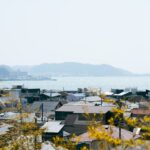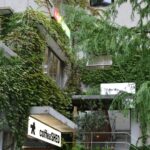Have you ever wanted to step off the beaten path and explore a side of Japan most travelers never see? Beyond Japan’s bustling cities and famous landmarks lies another world—one of eerie beauty, silent histories, and the ruins of forgotten dreams. The islands scattered off Japan’s coasts harbor mysterious relics from bygone eras, many abandoned and left to be reclaimed by nature. This immersive journey into Japan’s island haikyo (ruins) will take you to hauntingly beautiful places, offer practical tips, and reveal how these ghostly sites shape the country’s modern identity and sustainable travel culture.
Unveiling the Mystery: The Rising Fascination with Island Haikyo
In the last decade, haikyo tourism—urban exploration of abandoned places—has surged in popularity in Japan, attracting both locals and international adventurers. While some ruins are relics of modern industry, others whisper of wartime tragedy or secluded island life. On remote islands, these silent structures gain a unique mystique; shrouded by sea mist and overgrown vegetation, they are testaments to the country’s rapid modernization, social shifts, and the enduring power of nature to reclaim what is left behind. The allure of these islands lies not just in their haunting aesthetics but in the stories they preserve. Each ruin invites you to imagine the lives once lived among these now-quiet walls.
The Battleship Island: Gunkanjima’s Haunting Industrial Legacy
Arguably Japan’s most iconic island ruin, Gunkanjima (officially Hashima Island) rises from the sea like a fortress. Once one of the most densely populated places on Earth, the island’s concrete apartment blocks, schools, and factories were built atop a coal-rich seabed and thrived during the industrial boom of the 20th century. After the mines closed in 1974, Gunkanjima was abruptly abandoned, left to the mercy of typhoons and salty winds.
Visiting Gunkanjima feels like walking through a post-apocalyptic cityscape: crumbling stairwells, decaying machinery, and moss-draped corridors frame sweeping ocean vistas. Guided boat tours from Nagasaki provide essential safety information and historic insights, often accompanied by locals who once lived there. Their firsthand stories capture both the hard realities of island life—claustrophobic spaces, relentless work—and the close-knit communities that flourished before the silence descended. UNESCO recognized Gunkanjima as a World Heritage site, ensuring that its haunting legacy and the lessons it embodies will not be forgotten.
Between Past and Peace: Okunoshima’s Secret Ruins and Soft Residents
While Okunoshima—lovingly called Rabbit Island—is famous for its friendly, free-roaming bunnies, the island is also marked by somber reminders of its secret wartime past. During World War II, it housed factories that produced poison gas, hidden from both the Japanese public and the wider world. Today, the exposed concrete husks of those factories, gas storage units, and military barracks create an eerie contrast with the pastoral calm and playful rabbits that now populate the island.
Visitors can wander through the abandoned structures, their walls echoing both nature’s reclamation and the island’s sobering history. The small yet powerful Poison Gas Museum sheds light on the human consequences of chemical warfare and the island’s steps toward peace. Okunoshima reminds us that haikyo are not just crumbling buildings—they are memorials urging us to reflect on the past while forging a gentler future. The unique mix of curiosity, remembrance, and hope makes every visit deeply memorable.
Beyond Guidebooks: The Allure of Japan’s Hidden Island Haikyo
For adventurers willing to journey further, Japan’s coastline hides dozens of lesser-known island haikyo. From deserted fishing communities with collapsed wooden homes to forlorn lighthouses, each site holds its own story shrouded in mystery. Little-visited uninhabited islands like Sarushima in Tokyo Bay or the storm-battered remains on Nozaki Island in Wakayama Prefecture offer haunting reminders of rural depopulation and the inexorable force of time.
These places are rarely featured in travel brochures. Often unmarked on official maps, they beckon to those who crave genuine discovery away from the tourist crowds. Of course, reaching these hidden ruins sometimes requires careful planning, a sense of adventure, and respect for natural hazards. Yet for those who do make the trek, the reward is the sense of uncovering your own lost paradise amid Japan’s islands.
Haikyo Tourism: Ethical Exploration and Local Connections
As interest in haikyo tourism grows, so too does the responsibility to explore with care. It is vital to respect both the delicate environments and the communities that surround these sites. Many ruins, especially on remote islands, are protected for their cultural, historical, or ecological value. Always seek local guidance, adhere to posted rules, and leave the sites exactly as you found them.
Safety is paramount: old structures may be unstable, and island weather can change rapidly. Guided tours, where available, provide not just historical context but essential safety measures. Supporting local businesses—through accommodation, food, and guided experiences—ensures your visit benefits residents and helps maintain these sites for future generations.
Ultimately, haikyo tourism thrives on a delicate balance: to experience the beauty of what’s left behind without leaving a trace. By traveling mindfully, respecting local stories, and contributing to sustainable tourism, you help keep Japan’s lost paradises alive—for both memory and discovery.








